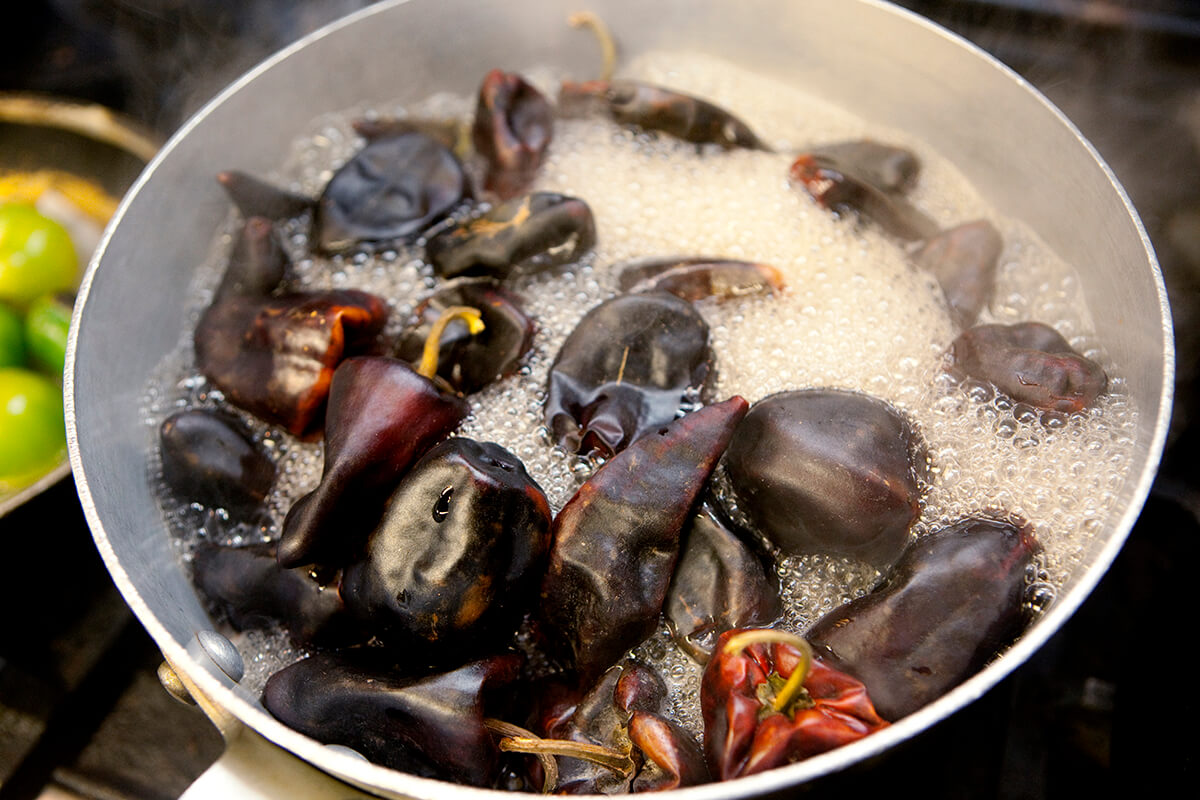The rare chile that gives the moles of Oaxaca their unique flavor is surprisingly mysterious given its long and venerable history. One thing most people don’t know about the chilhuacle is that it has been cultivated as a crop for more than six thousand years. The chile was already ancient about a thousand years ago when the Aztecs gave it its name, which means “the old one.” Scientific evidence pinpoints central Mexico as the site of the oldest domesticated chiles, also the historical location of chilhuacle cultivation. It’s true, the chilhuacle may be one of the oldest domesticated chiles on Earth, if not the oldest.

Another source of intrigue about chilhuacles is how these ancient chiles are grown. It is a common belief that the fruit ripens to yellow, red or black (amarillo, rojo, negro), all from the same plant. That may have been true at one point, but today farmers who grow chilhuacles grow them using a corresponding seed for each variety of plant. If a farmer wants chilhuacles negros, he plants chilhuacles negros seeds.
There is much debate still about all the world’s chiles. Though there are more than 10,000 varieties in existence, the number of species has changed several times, even as late as the 1950s. One truth agreed upon by botanists today however, is that all capsicum species originated in the Western hemisphere and are native to the tropical regions of the Americas, most likely from the region of Bolivia.
Given its exceptional history, it comes as no surprise that the chilhuacle would play a lead role in the cuisine of Oaxaca. Though their cultivation has dwindled over time, their position in Mexico’s culinary cannon is inexorable. Zocalito is proud to be a positive influence for keeping them alive. When did you last use chilhuacles? What did you make?
Photos by Chris Guibert

